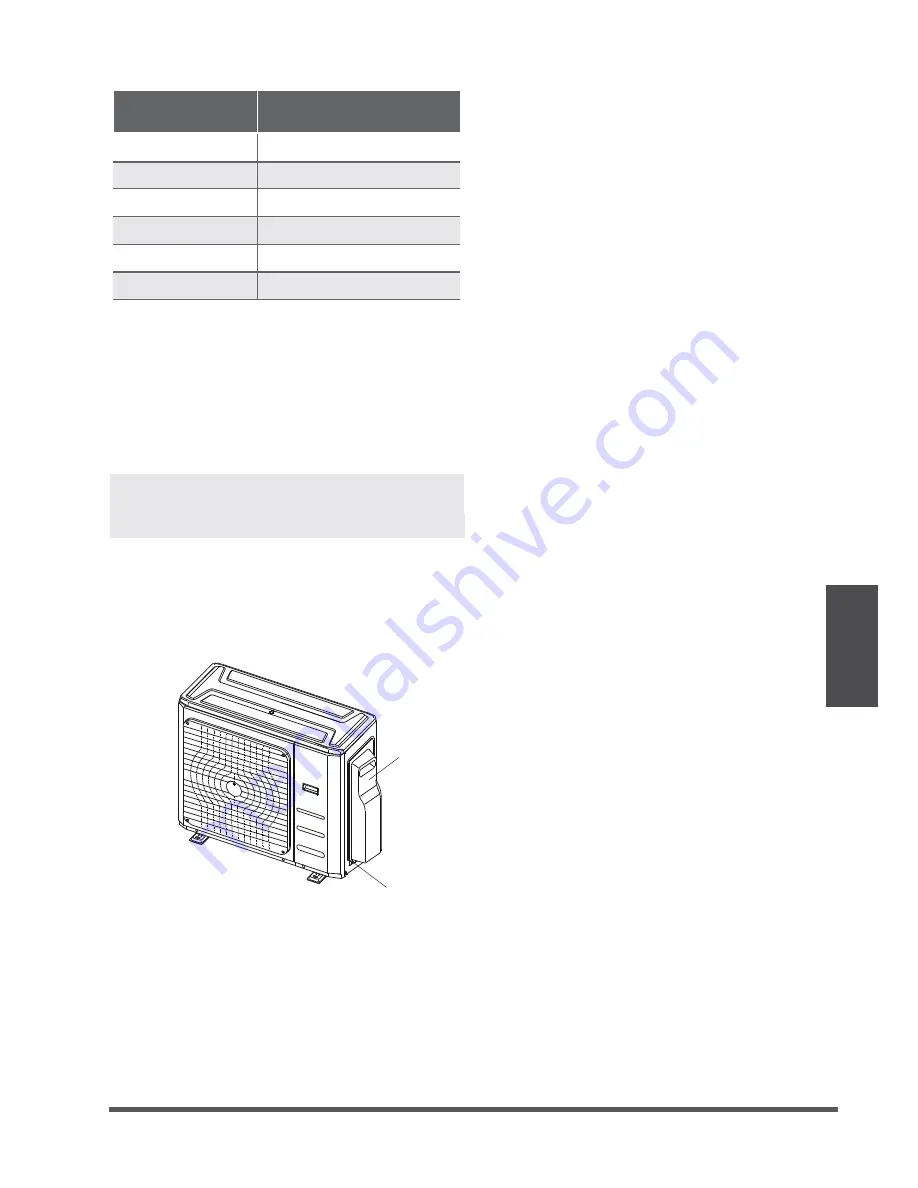
Table 8.2: European Regions
Rated Current of
Appliance (A)
Nominal Cross-Sectional
Area (mm²)
6
0.75
6 - 10
1
10 - 16
1.5
16 - 25
2.5
25- 32
4
32 - 45
6
Page 15
b. Using wire strippers, strip the rubber jacket
from both ends of signal cable to reveal
about 15cm (6”) of the wire leads inside.
c. Strip the insulation from the ends of the
wire leads.
d. Using a wire crimper, crimp u-lugs on the
ends of the wires (Ensuring solid contact).
NOTE:
While connecting the wires, please follow
the wiring diagram (found inside the electrical box
cover) strictly .
2. Remove the electric cover of the outdoor unit.
If there is no cover on the outdoor unit,
disassemble the bolts from the maintenance
board and remove the protection board.
(See Fig. 8.1)
Cover
Screw
Fig. 8.1
3. Connect the u-lugs to the terminals.
Establish a color scheme to use for each of the
wire leads. Repeat for every circuit’s terminal
block positions identically and firmly screw the
u-lug of each wire to its corresponding terminal.
4. Clamp down the cable with a designated cable
clamp.
5. Insulate unused wires with electrical tape.
Keep them away from any electrical or metal
parts.
6. Reinstall the cover of the electric control box.
Wiring
7. Mark all wires for each circuit clearly on both
ends to ensure that the wiring cannot be cross-
connected to the wrong indoor unit AND that
each wire lead with a specific color is attached
to the identically marked and matching
terminal position at both ends.
8. All inserted terminals and wire ends must
make perfect contact with the terminal block,
to prevent system errors. Avoid making any
loose connections, and be careful when using
the crimping tool to crimp any terminals to
the wire ends.





























